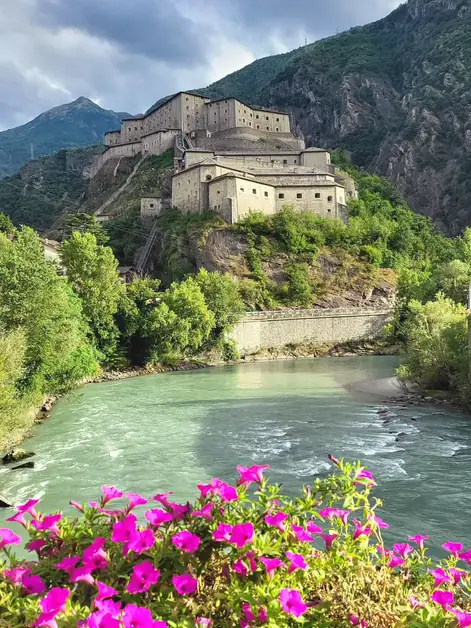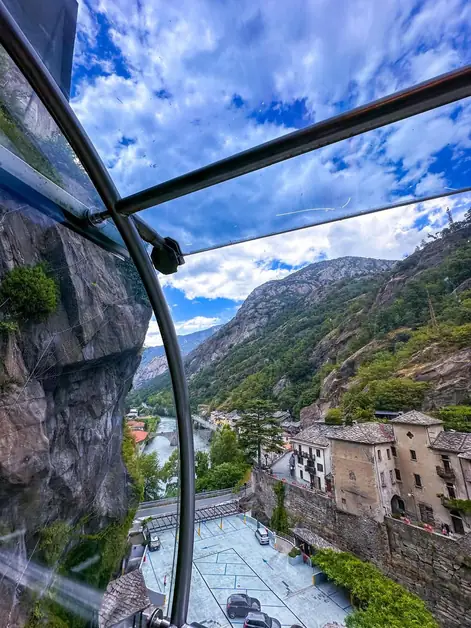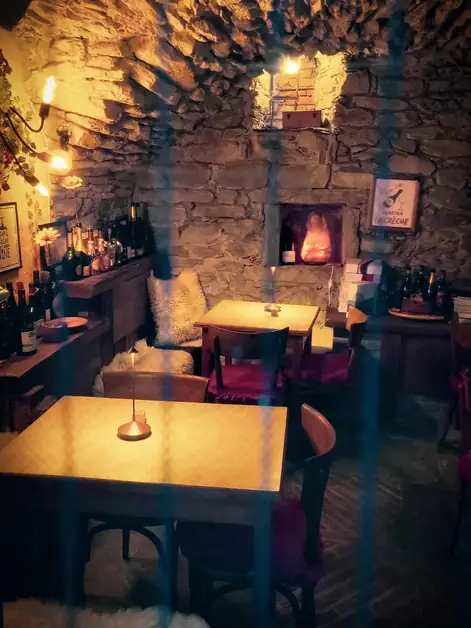The Castello di Bard between history and military architecture
The Castello di Bard is a symbol of history and military architecture in Aosta Valley.

Where is the Castello di Bard located in Aosta Valley?
The Castello di Bard is located in the medieval village of the same name, situated at the entrance of the Aosta Valley. The fortress rises on a rocky spur that dominates the narrow gorge of the Dora Baltea. Its strategic position has made it a fundamental control point between Piedmont and Aosta Valley over the centuries.
What is the historical origin of the Castello di Bard?
The first traces of a fortification on the site date back to Roman times, when Bard was a mandatory transit area along the Via delle Gallie. Even then, defensive structures existed to control the passage of troops and goods. However, the real development of the castle occurred in the Middle Ages, under the rule of the Lords of Bard.
Who were the Lords of Bard?
The Lords of Bard were a noble family that ruled the territory for several centuries, starting from the 10th century. Under their control, the castle was expanded and made increasingly impregnable. Their authority derived precisely from their ability to control the narrow valley and impose tolls on travelers.
When was the Castello di Bard rebuilt?
The current shape of the fortress is the result of the reconstruction ordered by the Savoy at the beginning of the 19th century. In fact, in 1800, during the Italian Campaign, Napoleon Bonaparte clashed with the resistance of the Savoy soldiers at the Forte di Bard. The castle resisted for two weeks against the French army, causing significant delays in Napoleon's march towards the Po Valley.
What happened after Napoleon's siege?
After the conquest, Napoleon ordered the destruction of the fortress, considering it a military obstacle. The Castello di Bard was largely demolished. However, in 1830, Carlo Felice di Savoia decided to completely rebuild it, transforming it into a modern military fortress, equipped with casemates and advanced defensive structures for the time.
Why is the Castello di Bard considered an example of military architecture?
The Castello di Bard is one of the best-preserved examples of military architecture of the 19th century in Italy. It consists of three main levels, connected by internal courtyards and galleries. Its thick walls, angled bastions, and cannon positions showcase the evolution of defensive techniques compared to medieval castles.
What is the role of the Castello di Bard today?
Today, the Castello di Bard is one of the main cultural hubs of the Aosta Valley. After a long restoration that began in the 1990s and was completed in 2006, it has been transformed into a museum center. It hosts temporary exhibitions, cultural events, and various permanent exhibitions, including the Museum of the Alps.
Is the Castello di Bard linked to important historical events?
Yes, the Castello di Bard was the protagonist of one of the most famous episodes of the Italian Campaign. The resistance opposed to the French troops in 1800 became a symbol of military courage. Furthermore, the reconstruction ordered by the Savoy represents one of the first examples of a modern fortress in pre-unified Italy.
What is the difference between Castello di Bard and Forte di Bard?
The terms "Castello di Bard" and "Forte di Bard" are often used interchangeably. However, the term "castle" refers to the original medieval fortification, while "fort" indicates the 19th-century military structure rebuilt by the Savoy. Today, "Forte di Bard" refers to the entire complex currently open to visitors.
Are there any curiosities related to the Castello di Bard?
The Castello di Bard has also been used as a film location. One of the most famous appearances is in the movie Avengers: Age of Ultron, where the fortress was transformed into a secret base of HYDRA. This notoriety has attracted new tourists, cinema enthusiasts, and military history buffs.
Why visit the Castello di Bard if you are interested in history?
Anyone who loves military history, alpine fortifications, or is passionate about Napoleon and the Savoy will find the Castello di Bard an unmissable stop. Every corner of the fortress tells historical episodes related to wars, resistances, and reconstructions. The visit also allows you to enjoy the view of the valley and walk through rooms that testify to centuries of history.




